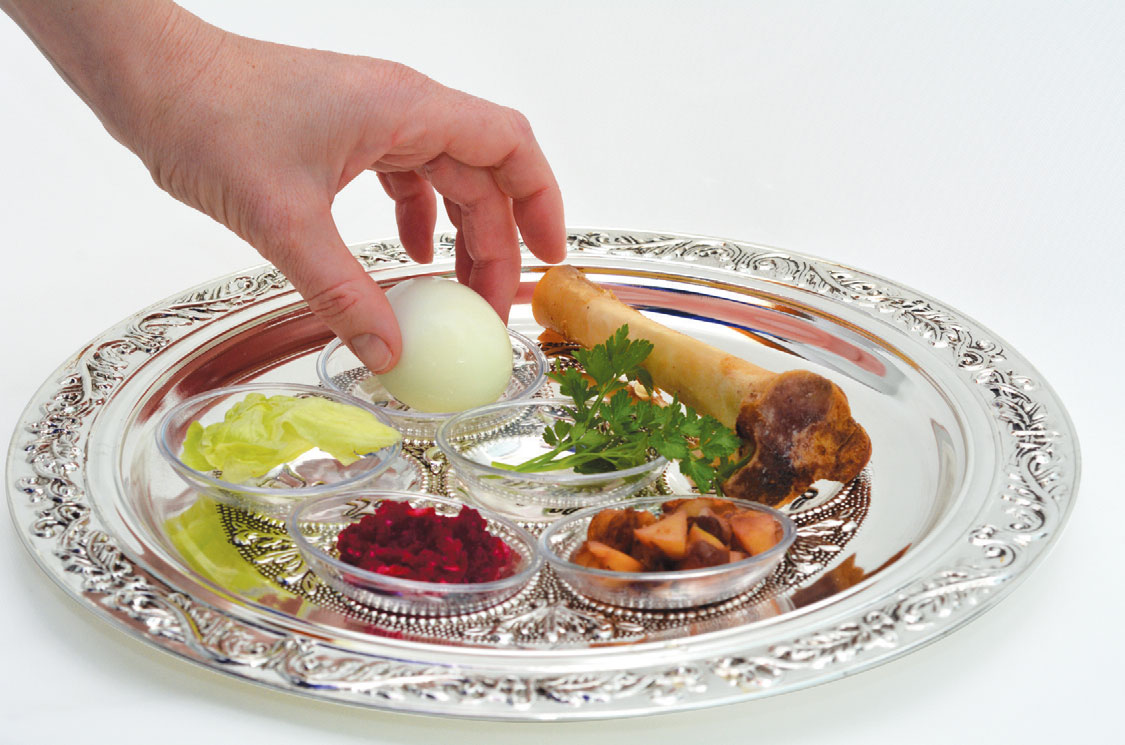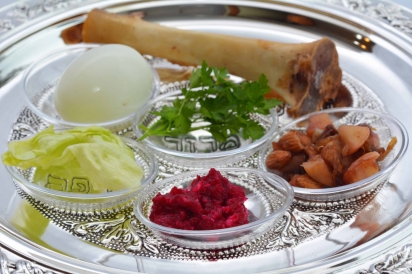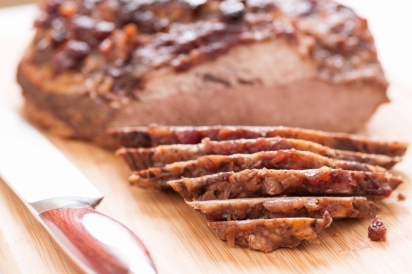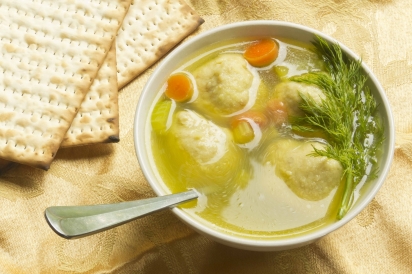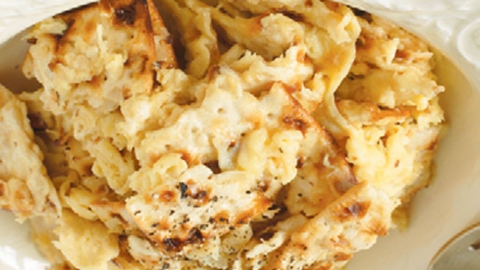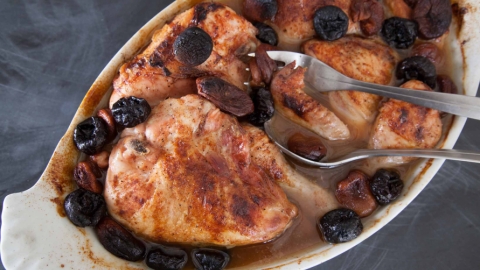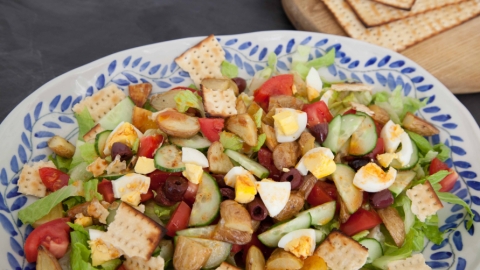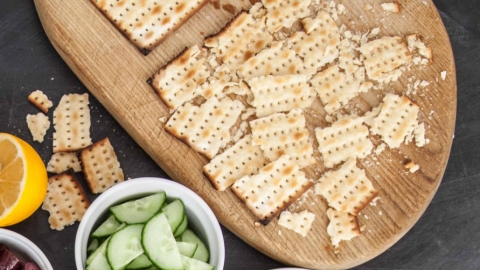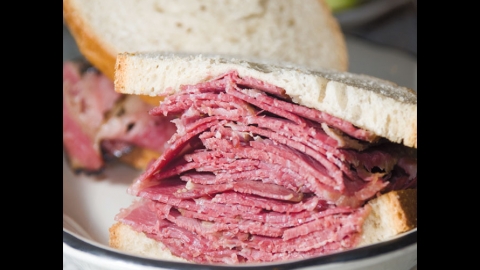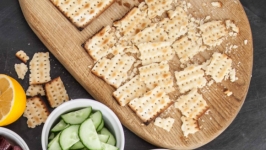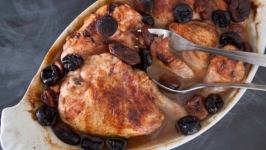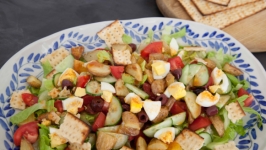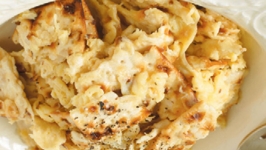Passover: A Spring Festival Commemorating Freedom Through Food
There’s an old Jewish joke that goes something like this: “They tried to kill us. We survived. Let’s eat.”
Food has always been an important component of Jewish life. Whether it’s a proscription against eating something or a commandment to eat something or to prepare an ingredient in a particular way, it sometimes seems like Jews have many more biblical beliefs about what to eat and not to eat than other people. (See “Keeping Kosher/Kasruth in the Valley,” Edible Phoenix Fall 2016.)
Food is almost always a part of our observance. We Jews remember a miracle with potato latkes, a victory over foes with a pastry (hamantaschen) and freedom from slavery with matzah. We celebrate a fall seasonal holiday by eating our meals in an outdoor temporary structure called a Sukkah. We welcome the Sabbath with a braided egg bread called challah. We eat apples and honey to hope for a sweet new year. And we fast, avoiding all food and drink, to atone for our sins.
Rabbi Bonnie Koppel, associate rabbi at Temple Chai in North Phoenix, suggests that “food is such a central part of life that eating specific foods is a way to reinforce religious identity.”
No holiday illustrates this concept more than Passover. What to eat and not eat is a central component of Passover, an eight-day festival that we celebrate each spring.
Passover commemorates the freedom from slavery and exodus of the Israelites from ancient Egypt during the time of the pharaohs. Observance includes cleaning the house of all chometz (any food that contains leavening or might contain leavening, which includes all cereals, breads, baked goods and anything that contains yeast, baking soda or baking powder); participating in a Seder (a special meal during which the story of freedom is retold by reading a book called a Haggadah); and eating matzah (also spelled matzoh or matzo), an unleavened bread referred to during the Seder as the “bread of affliction.”
Why unleavened bread? The belief is that when the Israelites fled Egypt they did not have time to let their bread rise but baked it anyway, hence the ritual of eating unleavened bread or matzah during the holiday.
The Seder
The first two nights of Passover are celebrated with a Seder. The word “seder” means order and there is a very specific order that we follow on the first two nights of Passover. A plate filled with foods of symbolic significance is placed on the Seder table. The plate holds bitter herbs to remind us of the bitter times in slavery; a shank bone to represent the sacrifice at the Temple before the exodus; a green vegetable like parsley to symbolize spring and a new beginning; a sweet paste made from apples, nuts, honey and wine called charoset, which resembles the mortar the Jews used when forced to build for the Egyptians; and an egg, which represents the cycle of life.
Through the years many Haggadah have been published, some very traditional and others more modern with less text. They all retell the story of freedom and exodus and contain pretty much the same prayers. The Haggadah is read aloud at all Seders around the world during Passover. Many families add pieces of ritual that are personal to them. Rabbi Koppel says, “I always try to find ways to orient the Seder to the ages of the participants. Every year I read a new Haggadah before the holiday and incorporate parts that I like, creating a supplement to keep the Seder interesting and promote discussion. It’s important for the leader to encourage questioning, which I think is a fundamental Jewish value.”
During the Seder, the youngest person at the table asks four questions from the Haggadah. The answers, found in the Haggadah, help to explain the meaning of the holiday. Very little food is eaten during the reading of the Haggadah, which in some homes where tradition is strictly adhered to can last up to several hours. We do partake of the bitter herbs and the other ingredients on the Seder plate as part of the ritual retelling of the freedom from slavery and exodus from Egypt but it’s the actual Seder meal that everyone looks forward to
So what do we eat at a typical Seder meal? Matzah, of course. Matzah must be eaten at the Seder but does not have to be eaten any other time during the holiday. Because some Jews have their origins in Europe (Ashkenazi Jews) and some in the Mediterranean (Sephardic Jews), there are a few differences in preparation of foods that are eaten at the meal. For instance, Sephardic Jews may include raisins and dates in their charoset whereas Ashkenazi Jews usually do not. Both have the same religious beliefs but differing cooking styles because of where they are from and the ingredients that were available to them.
Most of us will eat a similar menu although we may prepare the food differently. Some make brisket with fruit while others make it with lots of onions and other vegetables. One staple on the Seder table is chicken soup with matzah balls. Matzah ball recipes have a long history of contention. Some of us grew up in families where the matzah balls were light as air and others, like I did, grew up in families with what we call “sinkers.” All matzah balls contain matzah meal (ground matzah, which is used in place of flour for most recipes), eggs and fat but the proportion of ingredients and the preparation methods vary to produce either ethereal light balls or heavy sinkers.
Kugels, another staple on holiday tables, are pudding-like concoctions made with whole matzah or matzah meal mixed with eggs and either sweet additions like fruit or savory ones like potatoes and onions, mushrooms and even meat.
Gefilte fish is one of those foods that you probably have to grow up eating. It’s pretty much an acquired taste and one I have yet to acquire. Ground fish, onions, carrots, eggs and matzah meal (of course) are formed into ovals or balls and cooked. The resulting (mess!) is usually served cold along with a spicy horseradish (to disguise the taste!).
Chopped liver is another dish that probably elicits some discomfort from the uninitiated. It’s liver, after all. It’s a simple dish to prepare: Cooked liver (can be chicken liver or cow’s liver) is chopped with hard-boiled eggs and onions sautéed in oil or chicken fat. Some make it smooth and others leave it chunky. For those of us who like it, it’s a delicacy. Others feel about chopped liver the way I feel about gefilte fish.
Desserts could be problematic because we don’t use leavening or regular flour and we don’t mix dairy with meat so if the Seder meal contains meat, there would be no dairy for dessert. That leaves out a lot of typical desserts. But we aren’t about to give up sweets so ingenuity led Jewish cooks to chewy sweet coconut macaroons, flourless chocolate cakes, cookies and mandelbread (similar to biscotti) made with matzah meal flour, and all kinds of cakes made with ground nuts instead of flour and made light with dozens of beaten egg whites.
The first two nights of the holiday are Seder nights. Families and friends gather. The story is retold. Questioning and discussion follow the meal. Nowadays most of us bring relevant social and political issues into the discussion. The evening usually ends with singing of traditional songs. Each year the Seder activities may be different but the core meal remains the same and it’s one we look forward to because of the significance of the foods.
(Special thanks to Merle Imerman Weiner, Barbara Lewkowitz, Sherrie Zeitlin, Carol Jaffe Aronson, Joan Brodsky Neer, Nina Targovnik, Judi Ehrenfried Gottschalk, Barbara Grossman, Iris Ruben Fox, Allie Bones, Sharon Fishman Ben-Mayer, Laura Siporin Miller for sharing their traditional meal menus with me.)


